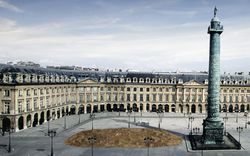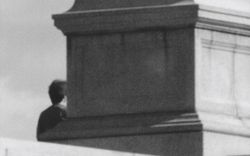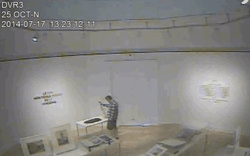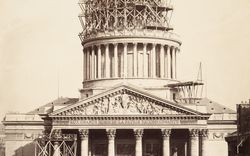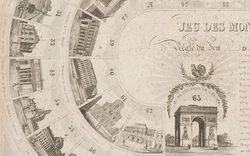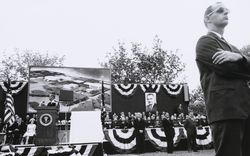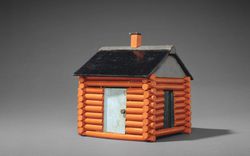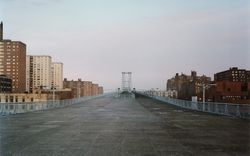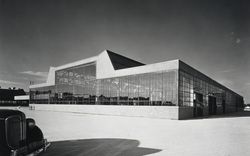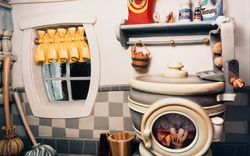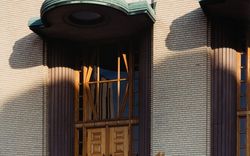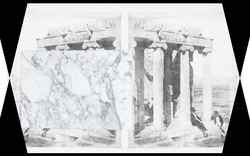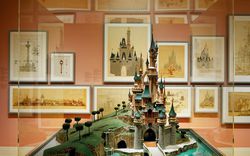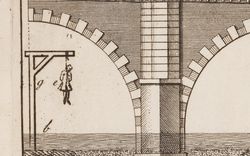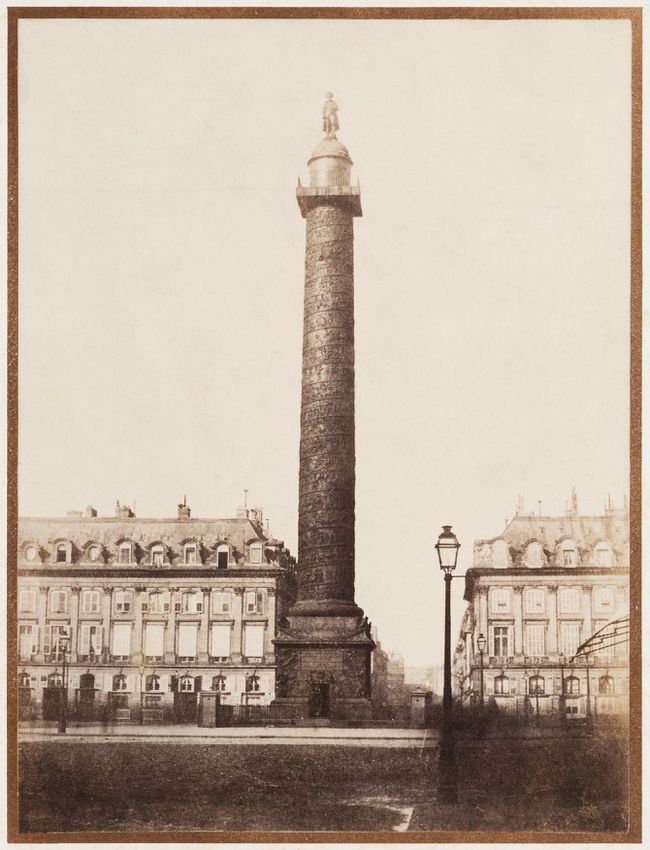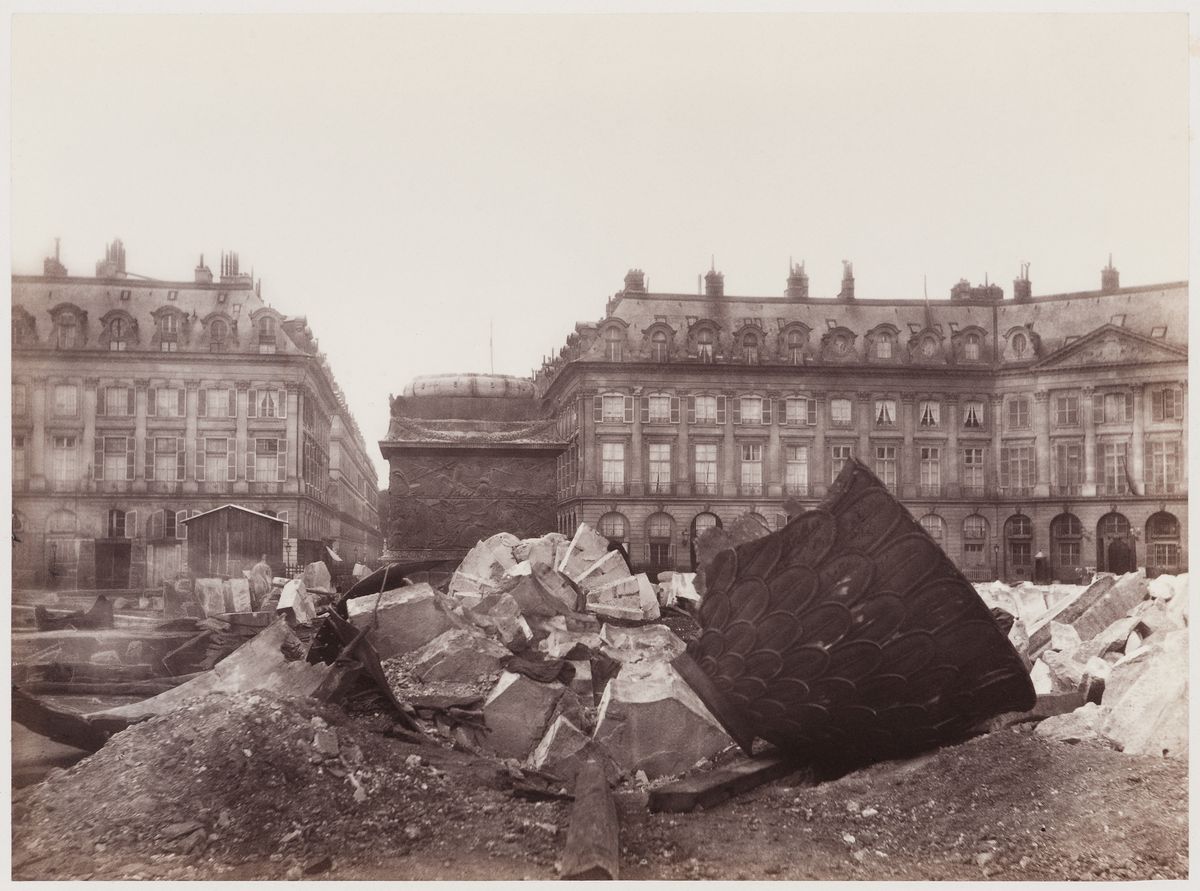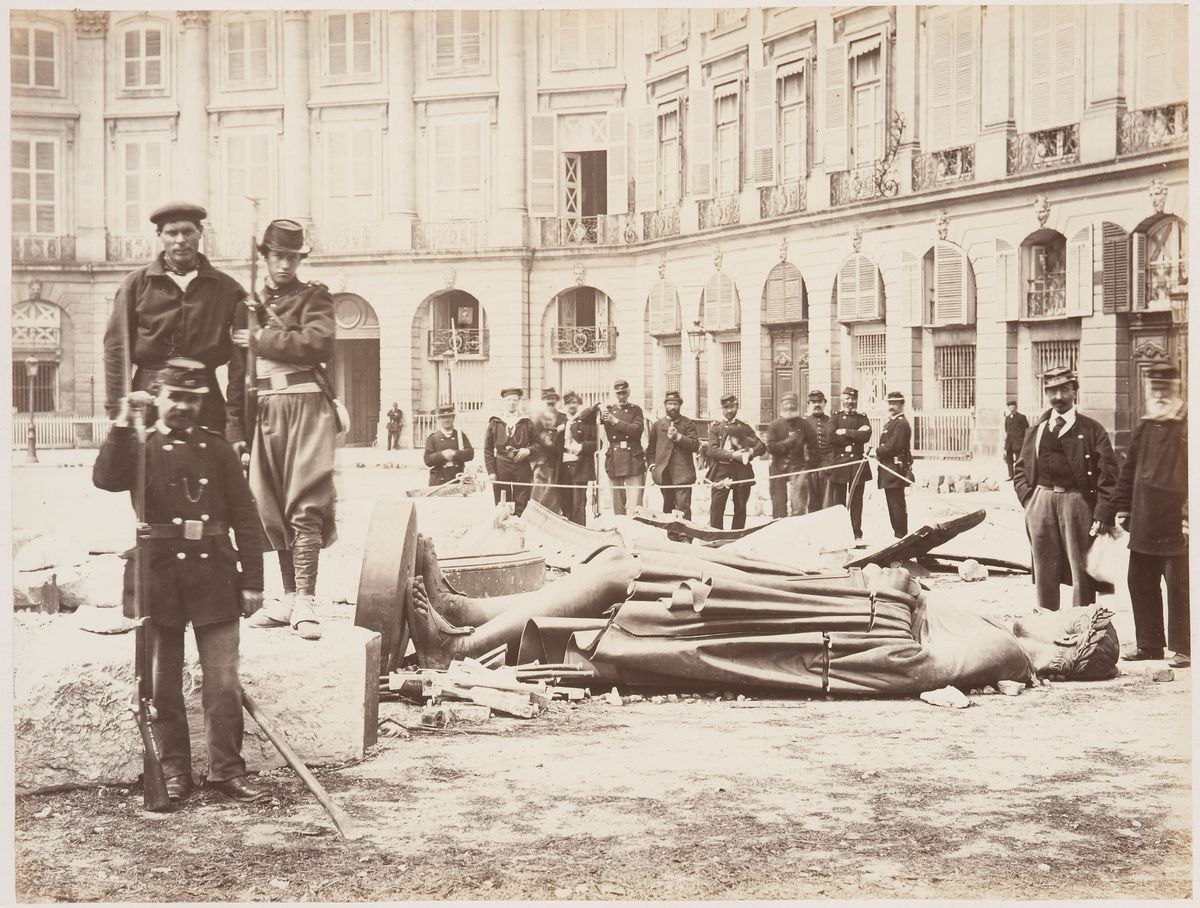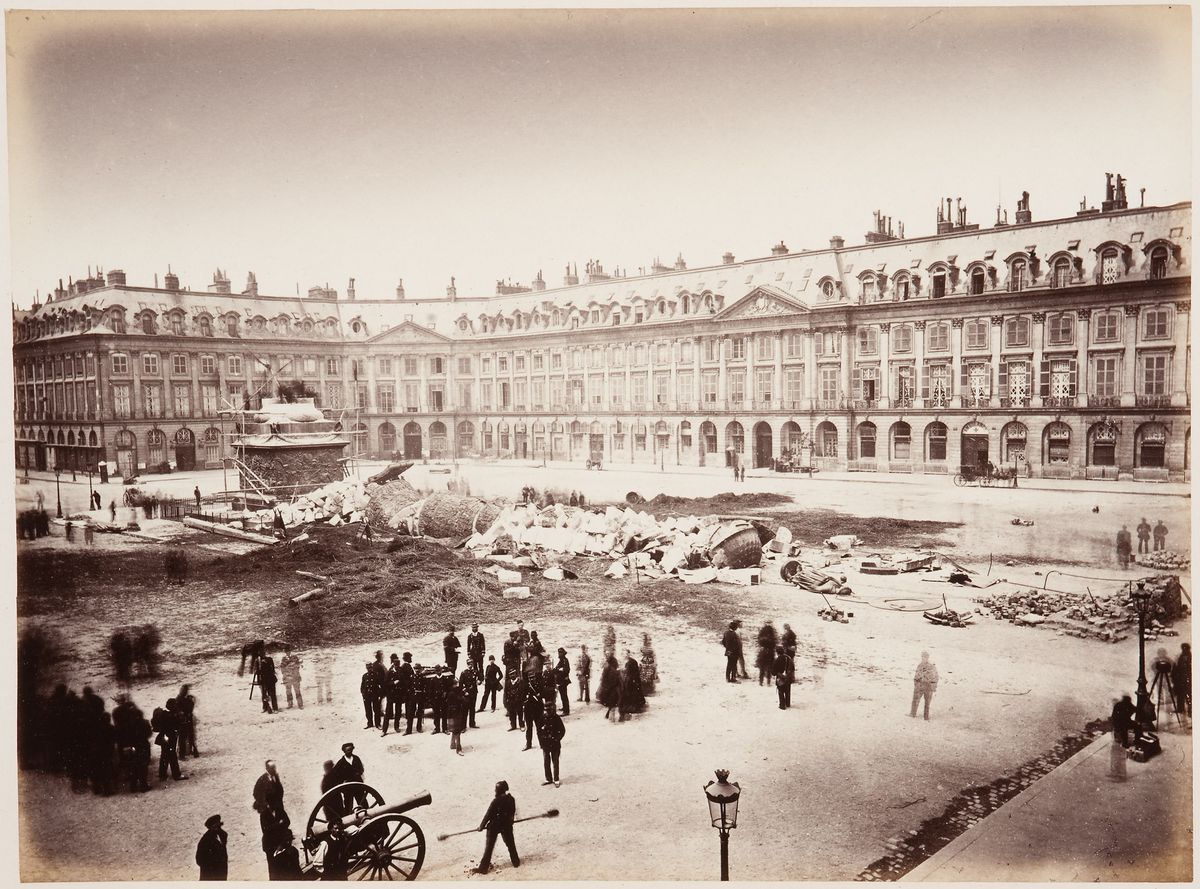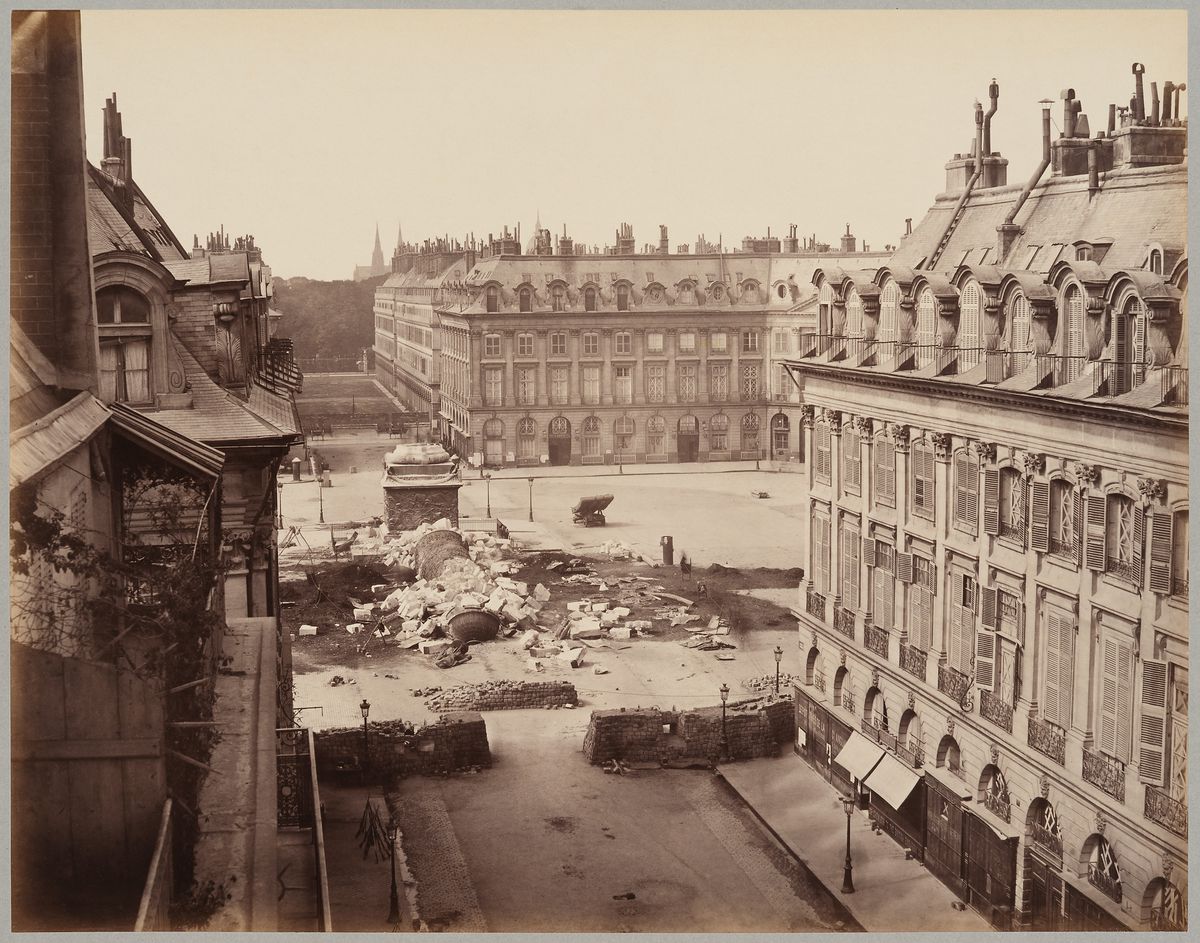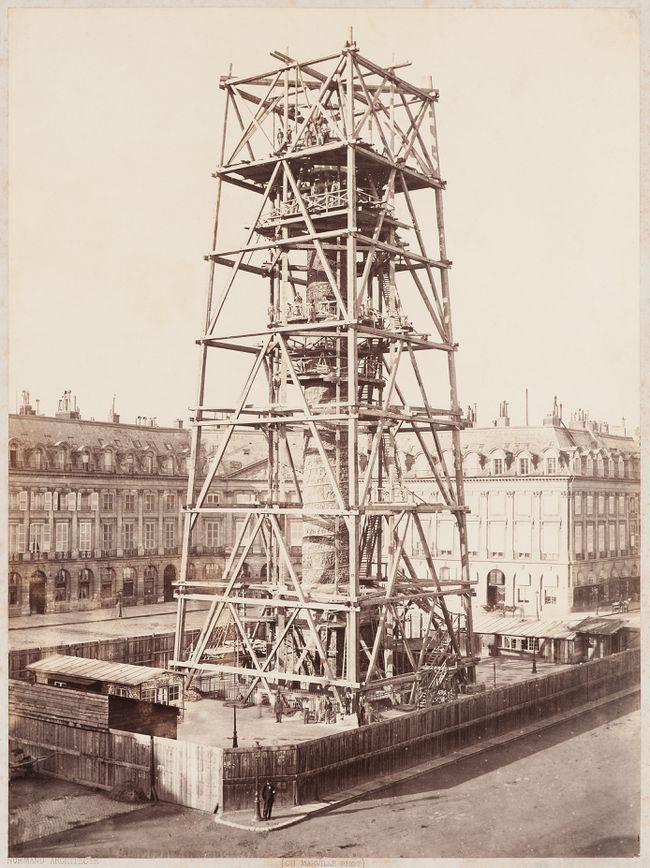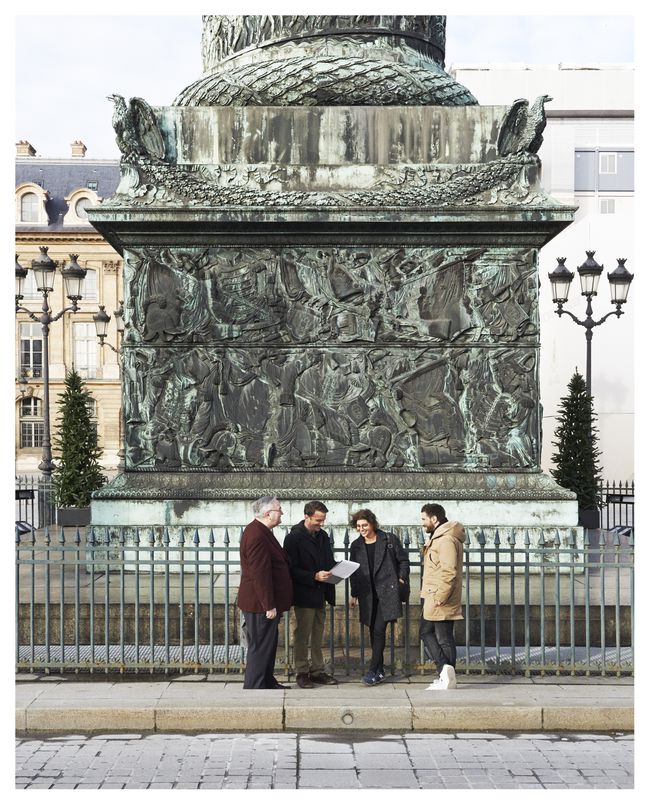The Radical Life of a Landscape
Text by David Gissen
The Commune de Paris was a highly controversial governmental body that oversaw the administration of Paris from 18 March to 28 May 1871. The Commune seized power in the chaotic wake of the Franco-Prussian war of 1870–1871: the French Emperor Napoleon III’s defeat and abdication in the battle of Sedan; the long siege of Paris by the Prussian Army; the capitulation, during the siege, of the French interim government of Adolphe Thiers to the forces of the Prussian chancellor, Otto von Bismarck; the failed attempt by Thiers’s government to disarm Paris’s National Guard at the hill of Montmartre; and Thiers’s flight from an armed and enraged Parisian population to Versailles.
On 18 March 1871, a combination of activist Parisian citizenry and the leaders of various Parisian leftist political organizations declared an autonomous Parisian government separate from Thiers’s “Government of National Defense.” Frustrated with diminished rights under Napoleon III’s governance, and suspicious of the royalist interests of the interim government of Thiers that followed Napoleon III’s abdication, they formed the Commune de Paris with the purpose of mixing French republican values with socialism in the governance of Paris. This government’s legislators wished to continue and amplify republican reforms from labor law and education to the role of the arts in urban life.
Transforming the iconography of Paris
As urban theorists from Henri Lefebvre to David Harvey have noted, the Commune came to power over a city that had radically transformed under the rule of Napoleon III. As “Prefect of the Seine,” Georges-Eugène Haussmann ordered former neighbourhoods in the centre of the city to be razed to construct luxurious buildings, and created new boulevards to stitch somewhat autonomous and poorer neighbourhoods at the periphery into the city centre and to amplify monumental symbols of Bonapartist power. The socio-natural ecology and iconography of the city transformed into a modernized series of road and sewer networks, zones and decrees that controlled everything from the distribution of water to the location of industries and animal waste. Within this context, the Commune was a movement that also attempted to enact transformations against this imperial vision of Paris.
Among the most symbolically charged and controversial public actions of the Commune was its demolition of the Vendôme Column at the centre of the square. The column was originally commissioned by Napoleon Bonaparte to represent and celebrate his military victory over the Austrian Imperial Armies at Austerlitz. It was built over the foundations of an enormous equestrian statue of Louis XIV that was demolished in the aftermath of the French Revolution in 1789. The column’s design was meant to recall the ancient column of Trajan in Rome (a monument Napoleon had originally wished to move to the site). In addition to the construction of the new monument, Napoleon commissioned the construction of a street—Rue de la Paix—that amplified the grandeur and the monument’s urban presence. In 1863, Napoleon III, the nephew of Napoleon I, oversaw a controversial renovation of the column in which he reinstalled a version of a statue of Napoleon Bonaparte in Roman imperial garments at the monument’s top. Via the renovation, Napoleon III secured the future of the monument as a symbol of Bonapartist power in Paris.
Before the Commune, the column had been a hated object of the French left, who took issue with its celebration of empire, militarism, and Bonapartism in the centre of Paris. Its renovation only intensified this animosity. The famous painter Gustave Courbet was one of the more visible of the French intellectuals who had called for the column’s removal in the name of ending the public glorification of dictatorial power and war. Félix Pyat, a famous Parisian playwright and active Communard leader, repeatedly called for its demolition. It had become a symbol of both the rule of Napoleon III and of Thiers’s own call to war against the Commune.
In the 12 April 1871 meeting of its leadership, the Commune officially condemned the monument as a representation of “imperialism,” “barbarism,” “brute force,” and “false glory,” and an “insult by the victors to the vanquished.” Claiming that the column represented the antithesis of the republican value of fraternity, they wrote a decree declaring that “the column in the Place Vendôme shall be demolished.”
The mound
The Commune commissioned the engineer Jules Iribe to carefully coordinate the demolition, and Iribe worked on the demolition plans with engineer Ismaël Abide and Georges Cavalier, the interim director of public works under the Commune. Among the various preparations for the demolition, which included attaching cables to the column’s top to capstans in the Rue de la Paix to pull it down, these individuals oversaw the construction of an enormous mound of sand, straw, branches, and manure in front of the column on the north side of the plaza. The mound’s construction was adopted from military trench fortifications that incorporated densely packed dirt and manure over a layer of straw, sand, and branches in order to absorb the shock of explosive cannon fire. On the Place Vendôme the engineers built the looming mound as a cushion to protect the surrounding windows and the large sewer beneath the plaza from the impact of the column’s mass. The Commune’s decree stipulated, and the engineers followed, that the Place Vendôme must be perfectly preserved during the demolition.
In many ways the mound was part of the everyday ecology of Paris at this particular time—dirt from excavation sites of the city’s many construction sites, straw and manure from the city’s numerous stables, and “fascines,” or bundles of sticks, that were used in the city’s defense during the siege. But the mound wasn’t solely quotidian, nor solely an object for maintaining the surrounding plaza; in its brief life it quickly took on other monumental qualities. This looming mound in the Place Vendôme resonated with the types of monumental mounds that were part of the symbolism of French eighteenth-century revolutionary culture. Leaders of the original French Revolution of 1789 commissioned the construction of large symbolic mounds both outside and within monumental buildings and squares. These mounds—often incorporating earth and rocks—became visible sites to raise revolutionary symbols in the midst of mass spectacles. Like these earlier constructions, for Communard leaders, writers and journalists, the mound of 1871 was a monumental and revolutionary symbolic site. But rather than a place to raise symbolic edifices, the mound would become the site on which Napoleonic militaristic imagery would fall into ruins on top of a pile of straw, manure, and dirt. Surviving photographs and drawings represent the mound as a significant artifact—a large pile of matter centred in the Place Vendôme.
On 16 May 1871, in a plaza the Commune renamed “Place Internationale,” the engineers safely toppled the column into the mound in front of a large crowd. Amid the clouds of dust kicked up by the collapse, a spontaneous celebration erupted on top of the pile of dirt, stone, and bronze from the flattened mound and destroyed column. Speeches were made and the entire demolition took on the air of a political festival. While the Commune viewed the demolition as a victorious moment in the re-conquest of the urban imaginary, others at the time condemned the demolition as a senseless and pointless act of irreverence towards the army, its leaders, and its veterans.
Reconstruction
The Commune’s celebration of their alternative vision of the city was brief, as Thiers’s armies, under the command of Patrice MacMahon, entered Paris just days later. The weeklong battle for Paris left thousands of Communards and Parisian citizens dead and much of central Paris in ruins. Immediately after the overthrow of the Commune and for several years after there was a systematic attempt by the National Government to purge the memory of the Commune, to punish those involved for its actions, and to enact a new massive program of monument construction in the city.
Within days after the suppression of the Commune, the Government of National Defense hired workers to clear away the dirt and debris of the Vendôme Column demolition. Over the next several months, various Communards were put on trial for the destruction, including Courbet and Cavalier. The National Government commissioned the architect Alfred Nicolas Normand and the Monduit foundry to salvage the reclaimed Vendôme Column fragments and to rebuild the column precisely as it was before, including recasting the statue of Napoleon as emperor that was damaged in the demolition. In dialogue with the images that circulated of its destruction, the reconstruction of the column became a spectacle of monumentality and engineering in the centre of Paris completed in December of 1875. From then to now—140 years later—all traces of the above events are absent from the Place Vendôme.
In tandem with attempts to purge the memory of the Commune, former Communards and political groups with sympathies toward the Commune have sought ways to recall and memorialize its aspirations and violent demise in the city’s public spaces. From graffiti that appeared in the 1870s and 1880s, small plaques erected in the 1950s, commemorative essays, books and pamphlets by groups such as the Situationists, or the recent efforts by Peter Watkins to reconstruct and re-enact Commune history, the Commune’s memory has become an international affair. In recent history it has taken hold as a critical aspect of urban history, particularly in the alternative ways we might envision urban space and governance.
Perhaps due to the urban revolutions that have swept the world in recent years and perhaps because the Commune has become a more accepted aspect of urban history, this activity has intensified and has impacted the actual public spaces within Paris. In one such effort to memorialize the Commune, the municipality of Paris recently installed a few plaques in public parks that mark important sites of fighting at the beginning and end of the Commune. These include the Place Louise Michel at Montmartre and a plaque at the Jardin du Luxembourg that join earlier markers such as the Mur des Fédéres at the Père Lachaise Cemetery, where over one hundred Communard soldiers were buried in a mass grave and which was declared a national heritage site in 1983. Most recently, the organization Raspouteam installed a series of temporary photomurals at various sites throughout Paris documenting their appearance during and immediately after the Commune.
In many ways, the project to remake the mound is an extension of the above efforts—a way to recuperate the complex and often absent history of these events within the contemporary city. Yet unlike earlier forms of Commune remembrance, a reconstructed mound offers a way to enter the very processes of urban destruction and reconstruction and the refashioning of the urban landscape embedded in this revolutionary moment and its defeat.
Ultimately, the mound is a seemingly simple yet complex and provocative socio-natural artifact—an earthwork that became a central part of a radical attempt to transform urban iconography. A reconstructed mound would offer a dialectical moment that recontextualizes and reawakens a moment in urban history tout court. Together with its history, the mound potentially enables us to envision another type of landscape within the city of Paris, another possible vision of the city that joins the more overt radicality of the Commune.
This text originally appeared in a booklet accompanying our 2014 exhibition The Mound of Vendôme, which Gissen curated.
